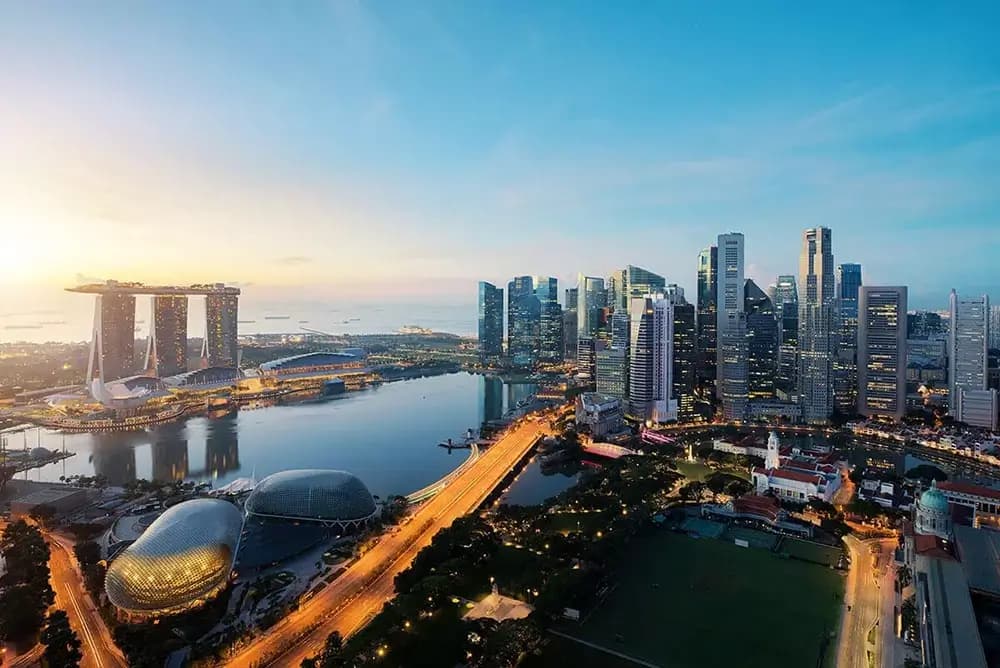
Technology for Singapore Green Plan
Sustainability is the new focus for the real estate industry, and the key to success lies in renewed innovation.
When it comes to the drivers of climate change, it is the world’s cities that are by far the biggest source of the carbon emissions warming the planet. The built environment accounts for nearly 40% of carbon emissions globally.
So it’s no surprise that those responsible for developing urban centres are now looking at strategies to reduce their impact on the wider environment. Sustainable solutions have been particularly sought after in commercial real estate where three factors are driving a new surge in innovation.
Firstly, governments are sensing a new level of urgency in the need to reduce the carbon footprints of industry, and are now enforcing strict standards and targets. In Singapore, for example, the government has pledged to have 80% of the buildings in the city-state to be certified “green”, utilising sustainable solutions in everything from building materials, to lighting, to layout designs. Its commercial real estate developers have been quick to embrace the challenge, and after just nine years of the pledge - some 40% of local buildings have been transformed.
Change is also being driven by the end users of urban infrastructure: consumers are the second driver, and are demanding much greater attention be paid to the total carbon footprint of the facilities that they use. They want greater flexibility and tailored solutions that seem to fit their own individual goals and lifestyle.
Besides compliance and market demand, continuous development in digital technology has been a third and equally important enabler of the trend towards more sustainable building solutions. The smart technologies provide customers with the tools necessary to move into a new era of connected and low-carbon operations, while allowing businesses to manage resources more efficiently to meet stakeholder expectations. The rise of digitally connected and sustainable smart buildings has created a whirlwind of innovation that continues to meet and then raise consumer expectations.
Digital to the rescue
As we move into a new decade, all of these drivers are combining to challenge long-held perceptions of what a building is and does. Gone are the purely functional designs that provided accommodation for workers or infrastructure – today a building can be its own integrated digital ecosystem.
Developers that place the need for sustainability, along with the experience of their end consumers first and foremost, are finding they can continuously create new value and build on these digital economies of scale.
Organisations need to map what the future of their business will look like in this more sustainable era. They need to understand the threats and opportunities, whilst defining a plan to ensure the greatest overall impact.
SP Digital’s mission is centred on this paradigm. It pushes itself to develop and to deploy innovative digital, sustainable energy solutions for businesses that make an otherwise complex journey simple and streamlined. The wide range of innovations that make up its GET® (Green Energy Tech) suite all focus on cost optimisation, energy efficiency, and improved occupant wellbeing.
"Chang Sau Sheong, CEO of SP Digital, says that this combined focus allows its partners and users to push forward on the far-reaching goals demanded by the world of 2021. “SP Digital offers a foundation to advance the sustainability goals of the built environment with our EnergyTech solutions,” he says. “We believe that each of us must play our part to ensure a low carbon, smart energy future for Singapore."
Embracing digitisation
Some of the most visible examples of innovative digital solutions in the built environment are based around the Internet of Things (IoT) and artificial intelligence (AI). With this in mind, SP Digital has developed its GET platform that integrates different building systems, data sources and solutions. Whether it is one single component or the entire suite, the system provides customers with a holistic and seamless experience when managing their buildings and interacting with their occupants.
The platform leverages AI and IoT to empower building managers with the knowledge and tools to make informed decisions, enabling high-performance buildings by almost every sustainability measure, and further driving positive behavioural changes amongst occupants.
With energy management as the core, customers have the option to select from various add-on modules in the areas of tenant sub-metering, managing distributed energy, electric vehicle charging systems, asset management, sustainability, indoor environment, user engagement, and much more.
There is a specific module available for businesses that need to efficiently manage the overall energy use by tenants and in common areas. This module simplifies what has been traditionally a massive challenge for commercial building operators, in managing utilities whilst minimising billing errors and productivity losses.
To drive greater sustainability branding for commercial buildings, another module available is GET Engaged. This is a digital display typically installed at high-traffic spaces such as lift lobbies or reception areas, provides timely data on the building’s aggregated utilities consumption and its resulting carbon emissions, which can be monitored over time and compared to other similar buildings or facilities.
GET Engaged further complements the SP app, which leverages behavioural nudges, gamification and sustainability tips to engage and to reward users for taking more environmentally friendly actions.
Across the full GET suite, SP Digital’s knowledge and innovation enable energy efficiency, operational efficiency, and improved occupant well-being and comfort for the built environment. The company vows to continue enhancing its GET suite of solutions to better serve customers.
To know more about SP Digital, GET, and its full portfolio of advice and services, contact: spd@spgroup.com.sg.